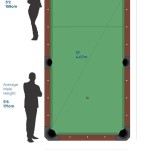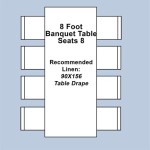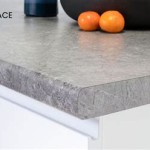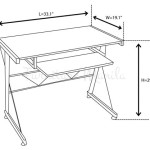Small Table Lamp Ideas: Illuminating Spaces with Style and Function
Small table lamps present a versatile lighting solution for various areas within a home or office. They provide targeted illumination, enhance ambiance, and serve as decorative elements. The compact size of these lamps allows for placement on bedside tables, desks, shelves, and console tables, making them adaptable to diverse spatial constraints and stylistic preferences.
The selection of a small table lamp necessitates consideration of several factors, including light output, design aesthetic, material composition, and intended function. A well-chosen lamp can significantly contribute to the overall visual appeal and practical usability of a room, providing both ambient and task lighting as needed.
The market offers a wide array of small table lamp styles, ranging from traditional to contemporary, minimalist to ornate. This diverse selection allows individuals to find lamps that seamlessly integrate with their existing décor while fulfilling specific lighting requirements. The following sections will explore various small table lamp ideas, focusing on their design characteristics and suitability for different applications.
Key Points in Choosing a Small Table Lamp
Selecting the optimal small table lamp involves carefully evaluating several key factors to ensure it effectively meets both functional and aesthetic needs. These key points encompass light output and type, design and style, and material and construction considerations.
Light Output and Type
The primary function of a table lamp is to provide illumination, and therefore, understanding the desired light output is crucial. Light output is typically measured in lumens, with a higher lumen rating indicating a brighter light source. The appropriate lumen level depends on the intended use of the lamp. For example, a bedside table lamp used for reading may require a higher lumen output than a lamp intended solely for creating ambient lighting.
Beyond lumen output, the type of light emitted also plays a significant role. Light temperature, measured in Kelvin, influences the perceived warmth or coolness of the light. Warmer light temperatures (around 2700-3000K) create a cozy and inviting atmosphere, while cooler light temperatures (around 4000-5000K) are often preferred for tasks requiring focus and concentration, such as reading or working.
Different types of light bulbs can be used in small table lamps, each offering its own advantages and disadvantages. Incandescent bulbs, while relatively inexpensive, are energy inefficient and have a short lifespan. Halogen bulbs are brighter than incandescent bulbs but also consume more energy. Compact fluorescent lamps (CFLs) are more energy efficient than incandescent bulbs but contain mercury and require careful disposal. Light-emitting diode (LED) bulbs are the most energy-efficient option, offering a long lifespan and low heat output. LEDs are available in a wide range of color temperatures and lumen outputs, making them a versatile choice for small table lamps.
Dimmable lamps offer increased flexibility, allowing users to adjust the light output to suit their needs and preferences. Dimmers can be built into the lamp itself or controlled via a separate switch. The ability to dim the light can be particularly useful in bedrooms or living rooms, where the desired lighting level may vary throughout the day.
Design and Style
The design and style of a small table lamp should complement the overall décor of the room. The lamp's shape, color, and finish should harmonize with the existing furniture and accessories. Consider the architectural style of the room when selecting a lamp. For example, a minimalist lamp with clean lines might be well-suited for a modern apartment, while a more ornate lamp with intricate detailing might be a better fit for a traditional home.
Numerous design styles exist for small table lamps, each offering a unique aesthetic. Traditional lamps often feature classic shapes, such as candlestick or urn designs, and are typically made from materials like brass, ceramic, or wood. Contemporary lamps tend to have simpler, more geometric shapes and may incorporate materials like metal, glass, or plastic. Industrial-style lamps often feature exposed hardware and raw materials, such as metal pipes or concrete.
The lampshade plays a crucial role in the overall design of the lamp. Different lampshade shapes, sizes, and materials can significantly impact the appearance and light distribution of the lamp. A large lampshade will diffuse the light more widely, creating a softer, more ambient glow. A smaller lampshade will focus the light downwards, providing more directional illumination. Lampshades made from light-colored materials, such as linen or cotton, will allow more light to pass through, while darker materials, such as silk or velvet, will absorb more light.
Consider the scale of the lamp in relation to the surface it will be placed on. A lamp that is too large may overwhelm the space, while a lamp that is too small may appear insignificant. As a general rule, the height of the lamp should be approximately one-third to two-thirds the height of the surface it is placed on. For bedside tables, the bottom of the lampshade should be at eye level when sitting in bed. For desks, the bottom of the lampshade should be at eye level when seated at the desk.
Material and Construction
The materials used in the construction of a small table lamp can significantly affect its durability, appearance, and cost. Common materials include metal, glass, ceramic, wood, and plastic. Metal lamps are typically durable and long-lasting, and they can be finished in a variety of colors and textures. Glass lamps are often visually appealing and can add a touch of elegance to a room. Ceramic lamps can be highly decorative and are available in a wide range of colors and patterns. Wood lamps can add warmth and natural beauty to a space. Plastic lamps are typically less expensive than lamps made from other materials, but they may also be less durable.
The quality of the construction of a small table lamp is also an important consideration. Look for lamps that are well-made and structurally sound. Check the stability of the base and the quality of the wiring. Ensure that the lampshade is securely attached to the lamp base and that the switch operates smoothly. A well-constructed lamp will last for many years and provide reliable lighting.
The type of finish applied to the lamp can also affect its appearance and durability. Common finishes include polished metal, brushed metal, painted finishes, and wood stains. Polished metal finishes can add a touch of glamour to a room, while brushed metal finishes offer a more subtle and understated look. Painted finishes are available in a wide range of colors and can be used to create a variety of different effects. Wood stains can enhance the natural beauty of the wood and provide a protective coating.
Consider the weight of the lamp. A heavier lamp will be more stable and less likely to tip over, particularly if it is placed on a small or unstable surface. However, a heavier lamp may also be more difficult to move around. Choose a lamp that is the right weight for your needs and preferences.
Specific Small Table Lamp Ideas
Numerous styles and applications exist for small table lamps, providing solutions for a variety of lighting and décor needs. Here are some specific ideas, considering function and aesthetic appeal.
Bedside Table Lamps
Bedside table lamps are essential for providing reading light and creating a relaxing atmosphere in the bedroom. When choosing a bedside table lamp, consider the height of the bed and the placement of the lamp. The bottom of the lampshade should be at eye level when sitting in bed, allowing for comfortable reading without glare. Choose a lamp with a dimmer switch to adjust the light output as needed. A touch-sensitive lamp can be particularly convenient for turning the light on and off in the dark.
Consider the style of the bedroom when selecting a bedside table lamp. A minimalist lamp with clean lines might be well-suited for a modern bedroom, while a more traditional lamp with a fabric lampshade might be a better fit for a more traditional bedroom. A pair of matching lamps can create a sense of symmetry and balance on either side of the bed. Alternatively, consider using two different lamps to create a more eclectic and personalized look.
For smaller bedside tables, consider wall-mounted lamps or clip-on lamps to save space. These types of lamps can provide directional lighting without taking up valuable surface area. Another option is to use a floor lamp with an adjustable arm, which can be positioned over the bed for reading.
Desk Lamps
Desk lamps are essential for providing task lighting for reading, writing, and other work activities. When choosing a desk lamp, consider the size of the desk and the type of work that will be performed. A larger desk may require a taller lamp with a wider shade, while a smaller desk may only need a smaller, more compact lamp. Choose a lamp with an adjustable arm and head to direct the light where it is needed most.
LED desk lamps are a popular choice due to their energy efficiency and long lifespan. They also produce minimal heat, which can be a benefit when working for extended periods of time. Choose a desk lamp with a color temperature that is appropriate for the type of work being performed. Cooler light temperatures (around 4000-5000K) are generally preferred for tasks requiring focus and concentration, while warmer light temperatures (around 2700-3000K) may be more suitable for tasks that are less demanding.
Consider a desk lamp with built-in features such as a USB port for charging electronic devices or a wireless charging pad. These features can help to keep your desk organized and clutter-free.
Accent Lamps
Accent lamps are used to highlight specific features in a room, such as artwork, plants, or architectural details. They can also be used to create a warm and inviting atmosphere. When choosing an accent lamp, consider the size and shape of the object you want to highlight, as well as the overall style of the room. A small spotlight can be used to illuminate a painting, while a taller lamp with a decorative lampshade can be used to add ambiance to a corner of the room.
Accent lamps are often placed on shelves, console tables, or mantels. They can also be used to create a sense of depth and dimension in a room. For example, placing an accent lamp behind a piece of furniture can create a soft glow that draws the eye and adds visual interest.
Consider using colored light bulbs in accent lamps to create a specific mood or atmosphere. Blue light can be calming and relaxing, while red light can be energizing and stimulating. Green light can be used to create a sense of nature and tranquility.
Materials and Technologies
The evolution of materials and lighting technologies continues to influence the design and functionality of small table lamps. Understanding these advancements provides consumers with greater options and allows for more informed purchasing decisions.
Advancements in Materials
Modern materials offer enhanced durability, sustainability, and aesthetic possibilities for small table lamps. Recycled materials, such as recycled glass and aluminum, are increasingly used in lamp construction, reflecting a growing concern for environmental responsibility. Innovative plastics, such as polycarbonate, provide lightweight and impact-resistant alternatives to traditional materials, allowing for more complex and sculptural lamp designs.
The integration of smart materials, such as shape-memory alloys, enables lamps to adapt to different lighting needs and spatial configurations. Shape-memory alloys can be programmed to change shape in response to temperature or light, allowing for adjustable lampshades and flexible lamp arms. These materials offer a glimpse into the future of adaptive and responsive lighting solutions.
The use of natural materials, such as bamboo, cork, and wood veneer, adds warmth and texture to small table lamps. These materials are often sustainably sourced and can create a more organic and inviting atmosphere in a room. The combination of natural and synthetic materials can result in visually appealing and environmentally conscious lamp designs.
Technological Innovations
The integration of smart technology into small table lamps offers enhanced control and customization options. Smart lamps can be controlled via smartphone apps or voice assistants, allowing users to adjust brightness, color temperature, and even schedule lighting changes. These features provide greater convenience and energy efficiency.
Wireless charging technology is increasingly incorporated into small table lamps, allowing users to charge their compatible devices without the need for cords. This feature can be particularly useful on bedside tables or desks, where space is limited.
The development of advanced LED technology has resulted in more energy-efficient and longer-lasting light sources. LEDs are now available in a wide range of color temperatures and lumen outputs, allowing for more precise control over the lighting environment. The use of LED technology also reduces heat output, making lamps safer and more comfortable to use.
The integration of sensors into small table lamps can enable them to automatically adjust their brightness based on ambient light levels. These sensors can help to reduce energy consumption and create a more comfortable and natural lighting environment.

10 Bedroom Table Lamps For Bedtime Reading Designcafe

Bedroom Inspo Lighting Ideas Castlegate Lights

Our 8 Favorite Bedside Lamps Of 2025 Reviews By Wirecutter

Lighting It Right How To Choose The Perfect Table Lamp Decoist

The 25 Best Bedside Lamp Ideas Lightopia

Creative Table Lamp Ideas For Small Living Rooms

26 Bedside Lamp Ideas To Light Up Your Room Living Spaces

Lighting In Small Bedroom Design Ideas Advice Lamps Plus

14 Hallway Lighting Ideas Stylish Ways Brighten Your

10 Stunning Diy Table And Floor Lamp Decoration Ideas For Brightening Up Your Home Fashion Pixies








